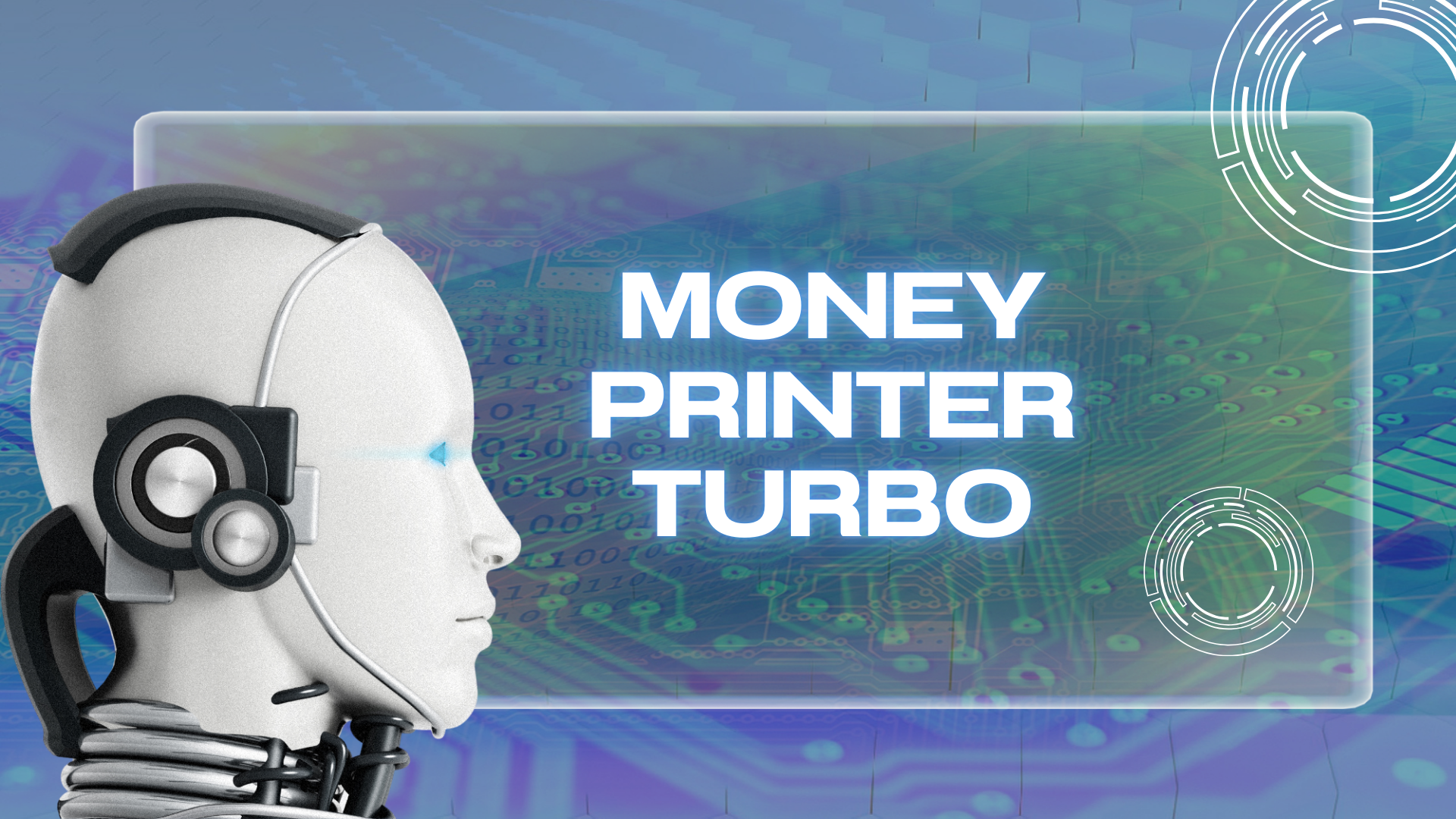Installing and Running MoneyPrinterTurbo on Windows

This guide provides a comprehensive, technically rigorous walkthrough for installing and deploying MoneyPrinterTurbo on a Windows environment. The instructions herein assume familiarity with command-line interfaces, software dependency management, and API integrations.
Overview of MoneyPrinterTurbo
MoneyPrinterTurbo is an advanced AI-driven video generation framework that leverages multiple API integrations to facilitate automated content creation. Its modular architecture requires a set of predefined dependencies and precise configuration to function optimally.
System Prerequisites
To ensure compatibility and optimal performance, verify that your system meets the following criteria:
- Operating System: Windows 10 or later.
- Python: Version 3.11 or higher.
- Miniconda: A lightweight Conda distribution for environment management.
- Git: Necessary for repository cloning and version control.
- ImageMagick: A robust toolkit for image manipulation and processing.
Installing Core Dependencies
- Python Installation:
- Download the latest stable release from the official Python website.
- During installation, select the "Add Python to PATH" option to facilitate seamless command-line execution.
- Miniconda Installation:
- Acquire the appropriate Windows installer from Miniconda's official site.
- Follow the installation prompts, ensuring that system PATH modifications are enabled.
- Git Installation:
- Obtain the latest release from Git's official website.
- Proceed with the installation, opting for default settings to maintain compatibility.
- ImageMagick Installation:
- Retrieve the installer from ImageMagick's official website.
- Complete the installation using default settings, unless specific configurations are required.
Installation and Configuration of MoneyPrinterTurbo
Step 1: Cloning the Repository
Launch the Command Prompt and execute the following command to create a local copy of the MoneyPrinterTurbo repository:
git clone https://github.com/harry0703/MoneyPrinterTurbo.git
Step 2: Virtual Environment Setup
Navigate into the cloned repository:
cd MoneyPrinterTurbo
Initialize a dedicated virtual environment using Conda:
conda create -n MoneyPrinterTurbo python=3.11
Activate the newly created environment:
conda activate MoneyPrinterTurbo
Step 3: Dependency Installation
Execute the following command to install all required Python packages as specified in requirements.txt:
pip install -r requirements.txt
Step 4: Application Configuration
- Configuration File Setup:
- Duplicate
config.example.tomland rename it asconfig.toml. - Open
config.tomlin a text editor and populate the fields with valid API credentials (e.g., Pexels, OpenAI).
- Duplicate
- Defining ImageMagick Path:
- If ImageMagick was installed in a non-default directory, update the
imagemagick_pathentry inconfig.tomlaccordingly.
- If ImageMagick was installed in a non-default directory, update the
Step 5: Executing MoneyPrinterTurbo
Launching the Web Interface
With the virtual environment active, initialize the web-based interface:
webui.bat
Upon execution, the web UI should launch automatically in a browser.
Running the API Service
To start the MoneyPrinterTurbo API backend, execute:
python main.py
Once the service is operational, API documentation can be accessed at http://127.0.0.1:8080/docs.
Applied Use Cases and Programmatic Integration
Example 1: API-Driven Video Generation
After successfully initiating the API service, the following Python script demonstrates how to programmatically request video generation:
import requests
url = "http://127.0.0.1:8080/generate"
payload = {
"script": "Welcome to AI-assisted content creation.",
"style": "documentary"
}
response = requests.post(url, json=payload)
print(response.json())
Example 2: Automated Image Processing via ImageMagick
To preprocess images before integrating them into videos, leverage ImageMagick using Python:
import subprocess
def resize_image(input_path, output_path, resolution="1920x1080"):
command = f"magick {input_path} -resize {resolution} {output_path}"
subprocess.run(command, shell=True)
resize_image("input.jpg", "output.jpg")
Example 3: Automatic Video Upload to YouTube
To streamline content distribution, automate video uploads using YouTube’s Data API:
from googleapiclient.discovery import build
from googleapiclient.http import MediaFileUpload
def upload_to_youtube(video_path, title, description):
youtube = build("youtube", "v3", developerKey="YOUR_API_KEY")
request = youtube.videos().insert(
part="snippet,status",
body={
"snippet": {
"title": title,
"description": description,
"tags": ["AI-generated", "automated video"],
"categoryId": "22"
},
"status": {"privacyStatus": "public"}
},
media_body=MediaFileUpload(video_path)
)
response = request.execute()
print("Video uploaded successfully!")
Diagnostic and Troubleshooting Guidelines
In case of installation or execution issues, consult the following resolutions:
- Connectivity Problems: Ensure an active internet connection is available for package retrieval.
- File Path Conflicts: Avoid non-ASCII characters and special symbols in directory paths.
- Configuration Errors: Verify API keys and service endpoints in
config.toml.
Conclusion
By meticulously following the aforementioned steps, you will establish a fully functional MoneyPrinterTurbo instance on Windows. This sophisticated tool enhances AI-driven content generation workflows, enabling seamless video production through automation.